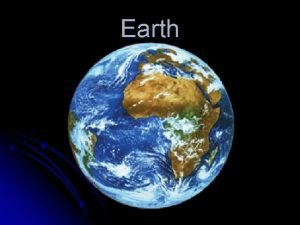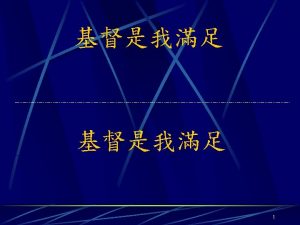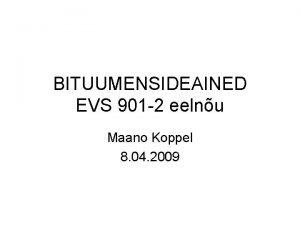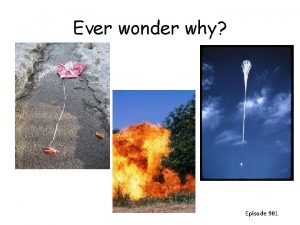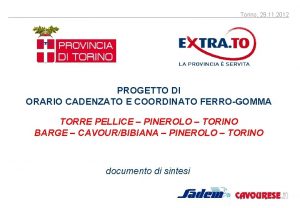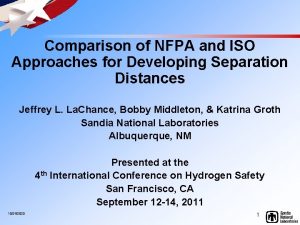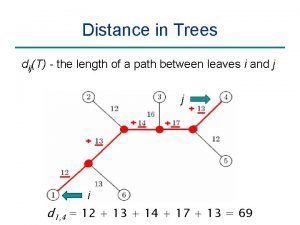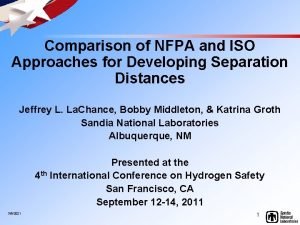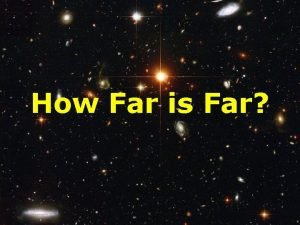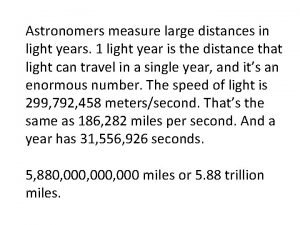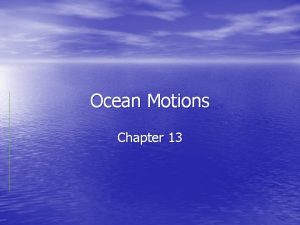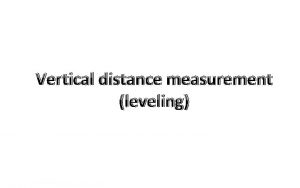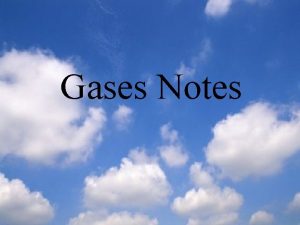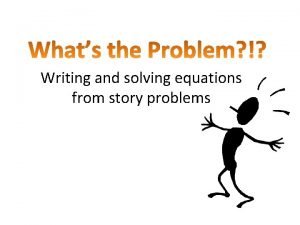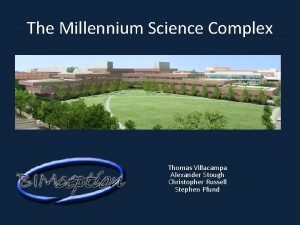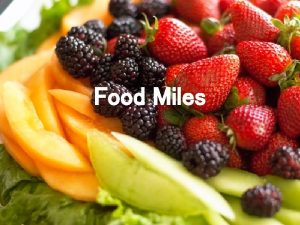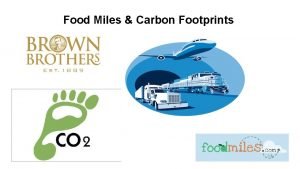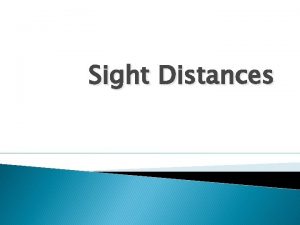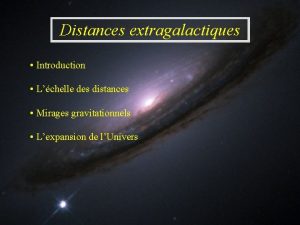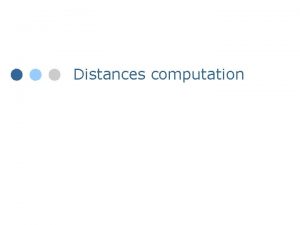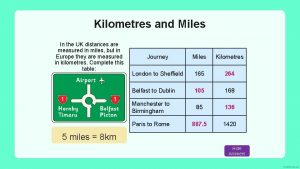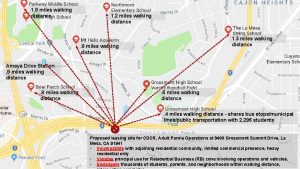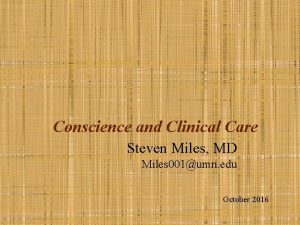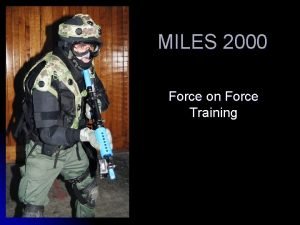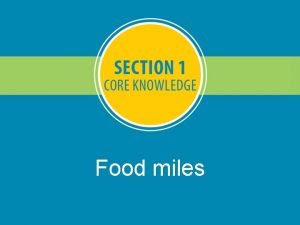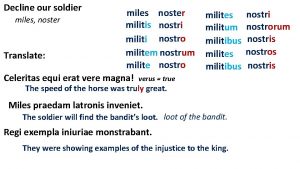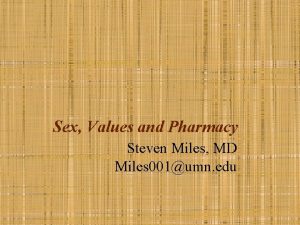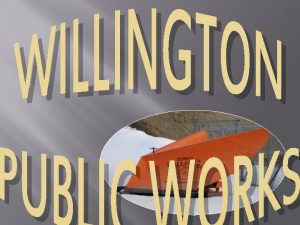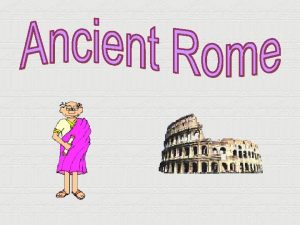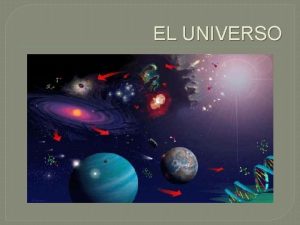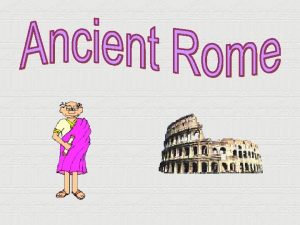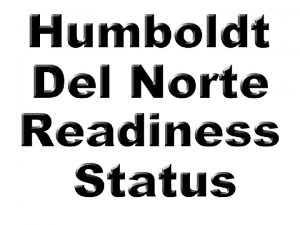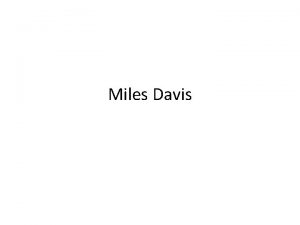Earth Distances l l 24 901 55 miles





























- Slides: 29

Earth

Distances l l 24, 901. 55 miles 24, 859. 82 miles 7, 926 miles 3, 452 miles l l Diameter of Earth Distance from the North to South Pole Distance across the United States Circumference around the equator

Water Volume l l l 50 gallons 70 gallons 14600 gallons 4 trillion gallons 326, 000, 000 (million trillion) gallons l l l Emitted from a tree daily Amount of water in the ocean’s of the Earth An average American uses daily An average human will drink in 80 years Falls to Earth each day

Speed l l l 67, 000 mph 1, 000 mph 4, 520 mph l l l Revolution of Earth around the Sun Speed of Rocket Plane (fastest plane) Rotation of Earth (Day/Night)

Population l l l 6, 692, 030, 277 1, 325, 639, 982 731, 000 680, 000 304, 059, 724 8, 682, 661 l l l New Jersey China Africa Earth Europe Unite States

ANSWERS: Distance 24, 901. 55 miles: Equatorial Circumference l 24, 859. 82 miles: Circumference from North to South Pole l 7, 926 miles: Diameter of Earth l 3, 452 miles: USA l

ANSWERS: Water Volume 50 gallons: Daily Activities l 70 gallons: Daily tree emits l 14600 gallons: Lifetime human consumes l 4 trillion gallons: Daily Earth precipitation l 326, 000, 000 (million trillion) gallons: Earth’s Ocean volume l

ANSWERS: Speed 67, 000 mph: Earth’s revolution around the Sun l 1, 000 mph: Earth’s rotation l 4, 520 mph: Rocket Plane l

ANSWERS: Population 6, 692, 030, 277: Earth l 1, 325, 639, 982: China l 731, 000: Europe l 680, 000: Africa l 304, 059, 724: USA l 8, 682, 661: NJ l

The Geosphere

Earth is a SYSTEM l l Geosphere Hydrosphere Atmosphere Biosphere

Earth Interior l l l Seismic waves used to study interior Seismic waves change is the material they travel through change Seismologist measure the change in speed and direction of seismic waves

Earth’s Composition Crust l Mantle l Core l

Crust Outer layer l Thinnest layer l 5 km to 8 km thick beneath oceans l 20 km to 70 km think beneath continents l Made of light elements l 1% of planet’s mass l

Mantle Beneath crust l 64% of planet’s mass l 2, 900 km thick l Made of rocks of medium density l

Core Inner most layer l Composed of densest elements l Radius of 3, 400 km thick l

Structure of Earth l Lithosphere l Cool, rigid layer l 15 km to 300 km thick l Include crust and upper mantle l Divided into l tectonic plates l Asthenosphere l Plastic, solid layer of mantle l 250 km thick l Made of rock that flows slowly l Allows tectonic plates to move

Structure of Earth l l l Mesosphere l Lower part of mantle l 2, 550 km thick Outer core l Outer shell of Earth’s core l 2, 220 km thick l Made of liquid nickel & iron Inner core l 1, 228 km thick l 4, 000 -5, 000°C l Made of solid nickel and iron l Why solid?

Plate Tectonics Tectonic plates glide on top of asthenosphere l Major plates l l North American l South American l African l Pacific l Eurasian l Antarctic

Plate Boundaries l Types of movement: l Collide l Separate l Slide past one another l Can form: l Mountains l Ex: l Himalayan Mnts 50 Million Years ago l Earthquakes l Volcanoes

Earthquakes l l l Fault- break in Earth’s crust where blocks of crust slide past one another When block of rocks suddenly slip under the pressure the vibrations felt throughout Earth Richter Scale measures earthquake's magnitude (energy) l l l 2. 0 -9. 5 can be felt Scale increases by 31. 7 7. 0+ results in widespread damage

Where do Earthquakes Occur? Mostly at or near tectonic plates due to the enormous stress l Many earthquakes in past 15 to 20 million years along San Andreas fault l

Earthquake Hazard Area’s earthquake hazard level determined by past and present activity l Not only high risk areas in danger l l Charleston, SC 1886 l Sandy, loose soil= EXTENSIVE damage l Earthquake-resistant buildings are slightly flexible

Volcanoes A mountain built from magma (melted rock) that rises from Earth’s interior l Usually near plate division or collision l Can be on land or under water l Under water may lead to island formation l

Local Effects of Eruption Clouds of hot ash, dust, and gasses flow down slope up to 200 km/hr (124. 3 miles/hr!) l Volcanic ash + water = mudflow l Ash falls to ground; building collapse under weight, bury crops, damage engines, and cause breathing difficulties l

Global Effect of Eruption Climate changes for several years l Volcanic ash and sulfur-rich gases spread across planet in atmosphere Block some sun lower temperature l

Erosion l Removal and transport of surface materials

Water Erosion Rivers- create deep gouges through mountains l Oceans- water continually beat surface l

Wind Erosion Plants root soil, no plant=loose soil l Soft rock (sand stone) is easily eroded l
 24 901 miles to km
24 901 miles to km Earth from 4 billion miles away
Earth from 4 billion miles away 0 901
0 901 901-2
901-2 Episode 901 review answers
Episode 901 review answers Orari 901 torre pellice pinerolo
Orari 901 torre pellice pinerolo 00-901 warszawa
00-901 warszawa Ccc-901
Ccc-901 220-901 exam braindumps
220-901 exam braindumps Fns handbook 901
Fns handbook 901 Nfpa separation distances
Nfpa separation distances Tree distances i
Tree distances i Nfpa separation distances
Nfpa separation distances Far distances
Far distances Astronomers measure large distances in light years
Astronomers measure large distances in light years West north west wind direction
West north west wind direction Winds that blow over longer distances build up bigger
Winds that blow over longer distances build up bigger Vertical distance measurement
Vertical distance measurement Ted likes to run long distances
Ted likes to run long distances Heights and distances
Heights and distances How do local winds and global winds differ?
How do local winds and global winds differ? Navigation using speed, distance and time calculations
Navigation using speed, distance and time calculations Gas particles are separated by relatively large distances
Gas particles are separated by relatively large distances Distance covered
Distance covered Television images travel huge distances through
Television images travel huge distances through Agility hexagonal agility test
Agility hexagonal agility test The furthest distances i've travelled
The furthest distances i've travelled A race car can travel at a rate of 205 miles per hour
A race car can travel at a rate of 205 miles per hour Miles villacampa
Miles villacampa Unit prefixes
Unit prefixes
